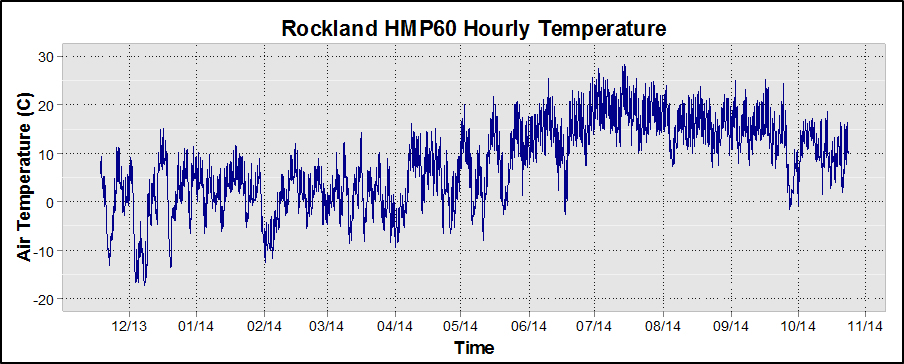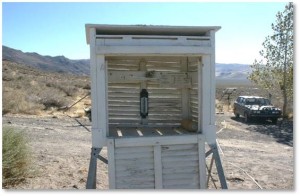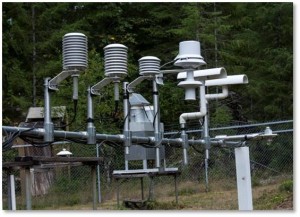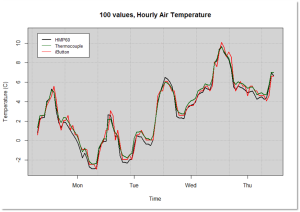
It would be understatement to say that air temperature is the single most important climate variable to measure. The growth of biologic organisms, especially plants, is closely tied to temperature regimes. That is, for any given organism there exists some set of thermal limits that ultimately determine survival. Another crucial process that depends upon temperature is the water cycle. The amount of water vapor that can exist in any air parcel is determined by temperature. The elevation at which rain turns to snow is set by temperature. Countless other processes are also regulated in similar fashion.
It seems that these days, global temperature has been reduced to a single measurement that then becomes the driver of scientific and political discourse. We are constantly bombarded by predictions of disaster, and frankly, it’s difficult to keep up and stay engaged when the drumbeat is so monotonous. But what about the temperature where you are? Where you work? Where you do your research (if you go that way)? How is it measured, and what does it look like over a day? Season? Year?
It turns out that in many places of the world, measurements of air temperature are not common. Sure, they can be found in any urban area, but what about the plains, deserts, and mountains? Just maintaining instruments to monitor is an expensive proposition.

Another challenge to measuring air temperature is deployment design and shielding. Historically, thermometers needed to be placed inside of a double-roofed ventilated box called a “Stevenson screen”. More modern sensors are usually set in smaller radiation shields that maximize air flow as well as minimize incidental heating of the sensor space by solar exposure. Vertical/lateral air flow is essential, so that during periods of low wind velocity a warm air bubble does not build inside the sensor enclosure. Another key part is the absorption and IR radiative properties of the actual housing/shielding material. If the housing itself is capable of absorbing energy and then re-radiating at night, that can also cause a problem. Mechanical aspiration is the most effective method, but this also requires an operational fan to work, increasing the possibility of failure and bias.

Site/station setting is of course the primary issue with long-term temperature measurements. What sort of site is “representative”? How does air move around the location? What are the local reflection, absorption, and re-radiative sources? This is mostly a problem in the urban/built environment, but it is also a consideration for sites in “natural” settings. For instance, a good site in the mountains for measuring precipitation is not necessarily a good site for monitoring representative air temperature due to diurnal air flow patterns.
Another important consideration of temperature is the measurement interval. Historic records were kept using only the absolute minimum and maximum daily temperatures. Because there was no method for automated recording, hourly or better measurements were simply not obtainable (and by extension, the true average daily temperature). Today, we can measure air temperature at the minute scale, which dramatically alters our knowledge of how temperature behaves over the course of a day.

Finally, it must be noted that a certain amount of deviation exists between sensors themselves. Electrical design, thermal mass, recording interval, and air flow all influence the measurement at the sensor level. It is very typical for sensors to have engineering accuracy windows of +- 0.5 C, which is not insubstantial.
There is quite a bit of information out there on measuring temperature, the World Meteorological Organization has even published standards on the subject.
So, before you set up that backyard weather station or start trusting what your car thermometer is telling you, consider some of the mitigating factors. This also explains why you can get very different results at your home in the suburbs compared to the official airport report on the evening news.
Did this article change your perception of temperature measurements? If so, Tweet it!
Tweet
